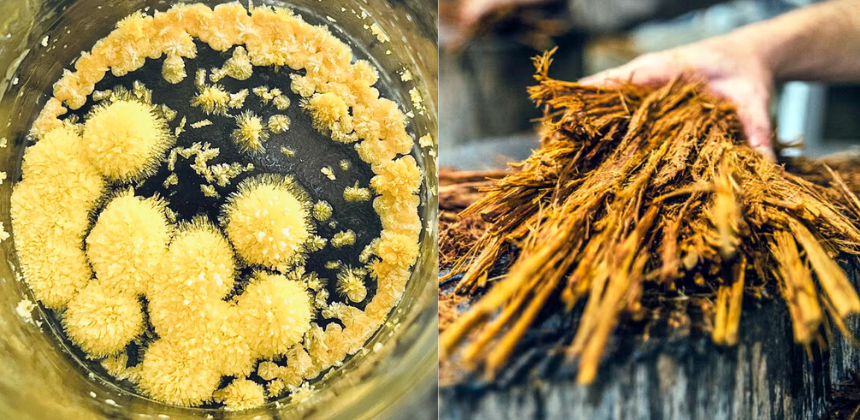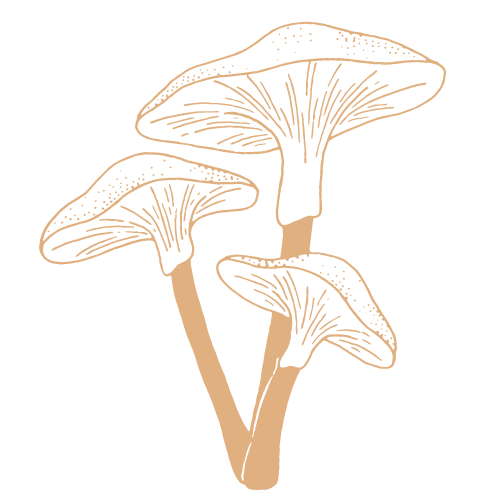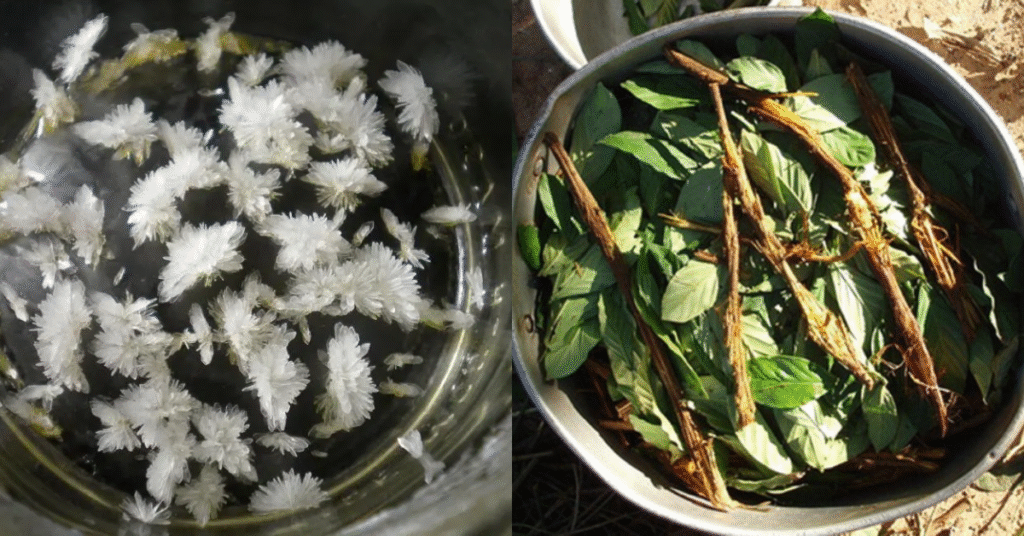If you’re just beginner in psychedelics you would ask questions like where does dmt come from? It natural primary source is the Mimosa Hostlis Root Bark (MHRB) and can also be synthesized in the lab. N-Dimethyltryptamine (DMT) is a naturally occurring psychedelic hallucinogenic drug of the tryptamine family, found in various plants and animals. This powerful substance has gained attention due to its ability to induce intense psychedelic experiences. As a hallucinogenic drug, DMT is often compared to other drugs and psychedelics like LSD and magic mushrooms.
Other related drugs like psilocybin and ayahuasca have recently been in the media for their recreational or spiritual uses. DMT, unlike other hallucinogenic drugs, has a fairly short window of effect, causing it to earn the name ‘the business trip’ during the 1960s. Understanding the origins and sources of this substance is crucial for those seeking insight into its potential effects and risks.
What Is N,N-Dimethyltryptamine (DMT)
DMT (Dimethyltryptamine) is a naturally occurring psychedelic substance found in many plant species. Traditional Amazon ayahuasca brews often use Mimosa tenuiflora, Diplopterys cabrerana, and Psychotria viridis. N,N-Dimethyltryptamine (DMT) is a potent, fast-acting psychedelic substance found naturally in various plants and animals, including humans. Known for inducing rapid and intense hallucinogenic experiences.
DMT Slangs
A number of slang terms exist for DMT:
- dimitri
- businessman’s trip
- businessman’s special
- fantasia
- forty-five-minute psychosis
What does DMT look like?
A variety of plants and animals contain DMT, and this compound serves as the psychoactive ingredient in the drug ayahuasca. To make ayahuasca, people boil a DMT-containing plant together with a plant that contains a monoamine oxidase inhibitor (MAOI) such as harmaline, and then drink the mixture.
When produced synthetically DMT is a white crystalline powder.

Natural sources of DMT/Where Does It Come From?
DMT (N,N-Dimethyltryptamine) is a powerful psychedelic substance that has both natural and synthetic origins. It is widely found in nature and can also be produced within the human body.
Here’s a detailed breakdown of where DMT comes from:
- Natural Plant Sources: DMT naturally occurs in a wide variety of plants across various regions. Including South America, Mexico, parts of Asia, and even seemingly innocuous sources like citrus plants. Most DMT available for recreational use is extracted from these plants.
- Mimosa tenuiflora (also known as Mimosa hostilis or Jurema): This bushy tree, native to Central and South America, is a commonly used source for DMT extraction. Its root bark is particularly rich in DMT, with around 1% of the dried weight being DMT.
- Psychotria viridis (Chacruna): A flowering shrub in the coffee family, its leaves are a significant source of DMT. Often used in ayahuasca brew.
- Acacia plants (especially Acacia confusa root bark): These plants contain DMT, with Acacia confusa root bark, native to South-East Asia, containing about 1.15% DMT. Other Acacia species mentioned include Acacia acuminata, Acacia maidenii, Acacia nubica, Acacia phlebophylla, and Acacia simplicifolia.
- Anadenanthera species (Anadenanthera colubrina and Anadenanthera peregrina): These plants, used to make snuffs like Yopo and Vilca, contain DMT, often alongside 5-MeO-DMT and bufotenine.
- Naturally Occurring in Animals: DMT has been identified in at least four animal species, including one gorgonian (a type of soft coral) and three mammalian species. It is also found in many other mammals.
- Endogenous Production in Humans and Mammals: DMT is a naturally occurring compound found in both plants and animals, and significantly, it is also found in human.
- Human Brain and Body: DMT is present in small amounts in human cerebrospinal fluid, blood, and other tissues. Researchers believe the human brain produces its own endogenous DMT, with ongoing research exploring its potential roles in consciousness, dreaming, near-death experiences, and protection from trauma.
- Synthetic Production Beyond natural sources, DMT can also be synthesized chemically in a laboratory. Synthetic DMT is often used in vape pens and is made with propylene glycol and vegetable glycerin. In DMT retreat settings, it is more commonly extracted from plant sources using chemical processes rather than being synthesized from scratch, due to the difficulty of acquiring starting materials.
DMT can also be found in other organisms
The Colorado River toad secretes the closely related 5-MeO-DMT, which is a more powerful psychedelic.
How is DMT used?
People use DMT (N,N-Dimethyltryptamine) in various ways. Ranging from traditional spiritual ceremonies to recreational settings and, increasingly, in scientific and therapeutic research. Furthermore, the method of administration directly shapes the onset, intensity, and duration of its powerful psychedelic effects. Looking for where to get DMT online look no further than Psychedelic Medicinal Dispensary.
DMT can be:
- vaporised or smoked in a pipe
- drunk as part of an ayahuasca brew
- snorted
- injected.
Where to Get DMT Safely with Discreet Shipping: Trusted Sources & Smart Buyer Tips
The Effects of DMT
DMT (N,N-Dimethyltryptamine) is a potent psychedelic compound known for producing profound, often life-changing experiences. Users report a wide spectrum of intense psychological, physiological, and deeply subjective effects that set DMT apart from many other psychedelics. Structurally, DMT closely resembles serotonin—the neurotransmitter responsible for mood regulation. And this similarity plays a key role in how it powerfully alters consciousness and perception.
The effects of DMT can vary significantly depending on the dose, the method of administration, and the individual’s mindset and environment (known as “set and setting”)
People widely recognize DMT for rapidly inducing intense and immersive altered states of consciousness.
- Intense Psychedelic Experience: Users often experience vivid visual and auditory hallucinations, including bright colors, intricate geometric and fractal patterns, and rapidly shifting shapes. Users often describe these visuals as deeply intricate, highly detailed, and overwhelmingly complex..
- Encountering Entities: Reports of encountering entities during a DMT ‘trip’ experience—beings often described as ‘machine elves,’ ‘little people,‘ ‘gnomes,’ ‘imps,‘ or even intelligent alien life forms that seem to exist in an independent reality. These multi-dimensional creatures sometimes appear vividly and may even communicate directly with the user.
- Ego Dissolution and Spiritual/Mystical Experiences: Experiencing ego death during a DMT journey—a state where they feel detached from their body, lose their sense of self, or transcend into an entirely new realm. People often portray these moments as mystical, profound spiritual awakenings, or even comparable to near-death experiences. Research reveals that DMT can generate brain wave activity similar to what occurs when someone is awake and interacting with the world, or during REM sleep—even with eyes closed.
Endogenous Hallucinogen
Beyond its presence in various plant species, researchers believe the human body also produces N,N-Dimethyltryptamine (DMT) naturally. This idea has led some to call it the ‘spirit molecule.’ Although the exact role of endogenous DMT remains under active investigation, studies suggest the pineal gland—a small endocrine gland in the brain—may synthesize it.
The pineal gland is often associated with the production of melatonin. A hormone that regulates sleep-wake cycles. However, some researchers propose that the pineal gland may also be involved in the synthesis of DMT. Particularly during certain states of consciousness, such as dreams or near-death experiences. This theory, known as the “DMT-pineal gland hypothesis,” suggests that endogenous hallucinogens may play a role in these profound altered states of awareness.
Synthetic DMT
DMT can also be produced synthetically in a laboratory setting. Synthetic DMT is often a white crystalline powder that can be vaporized or injected. However, the manufacture and possession of synthetic DMT are illegal under state and federal law in most countries due to its classification as a controlled substance.
Legal Status and Regulations for the Hallucinogenic Drug
DMT is classified as a Schedule I controlled substance under the United Nations Convention on Psychotropic Substances and is illegal in most countries. This means that the possession, distribution, and manufacture of DMT are prohibited and can result in serious legal consequences.
Is DMT Legal Anywhere: The DMT Unanswered Question
Despite its illegal status, DMT continues to be used in various contexts, including traditional spiritual practices, underground psychedelic circles, and scientific research. Some advocates argue for the potential therapeutic effects of DMT and other psychedelic drugs, particularly in the treatment of mental conditions such as depression, anxiety, and addiction. However, more research is needed to fully understand the risks and benefits of DMT and to develop safe and effective therapeutic approaches.




